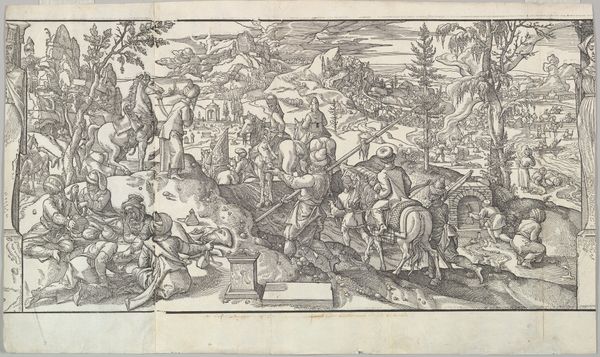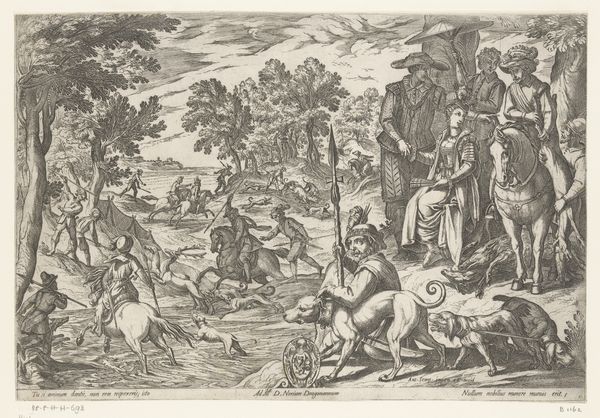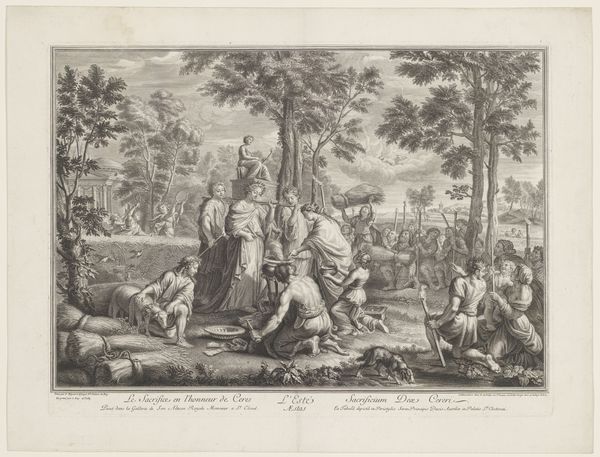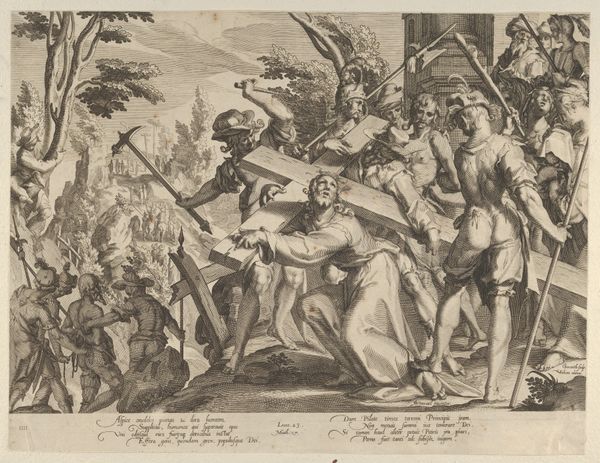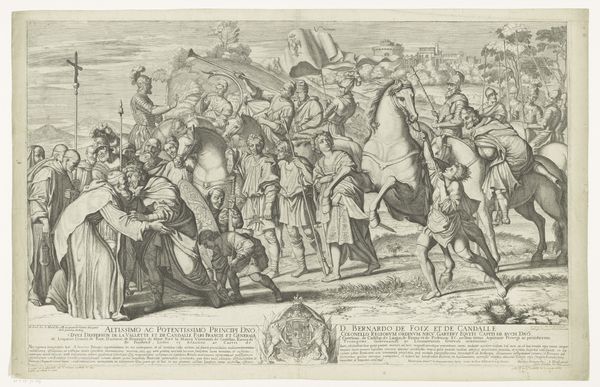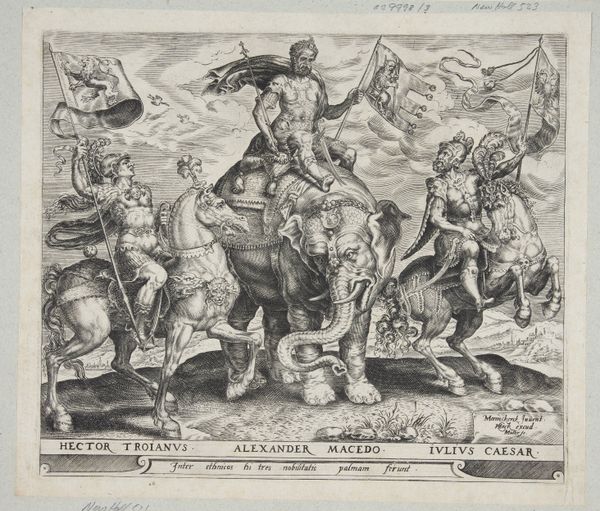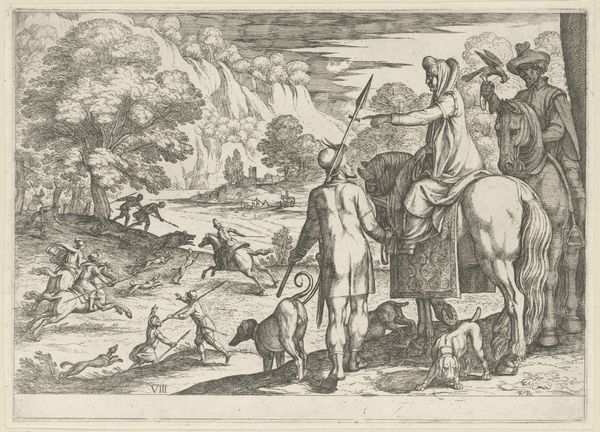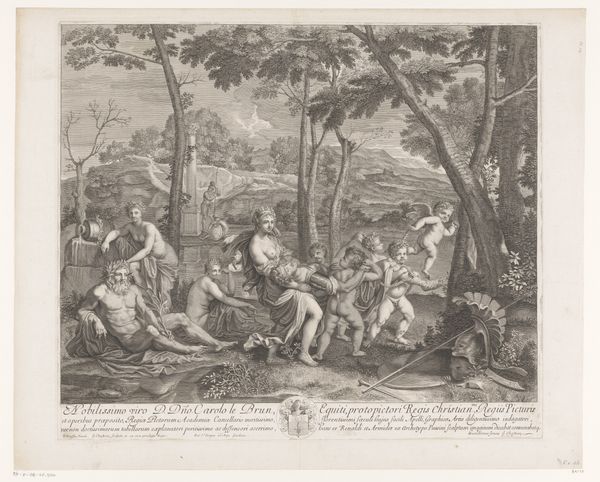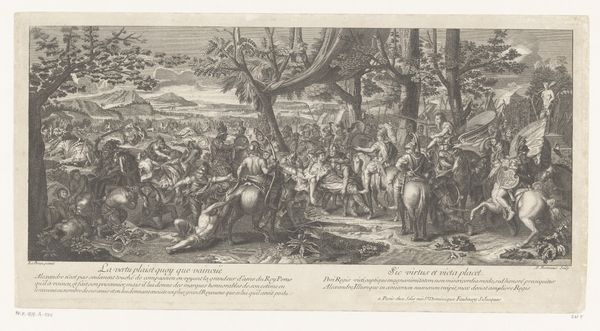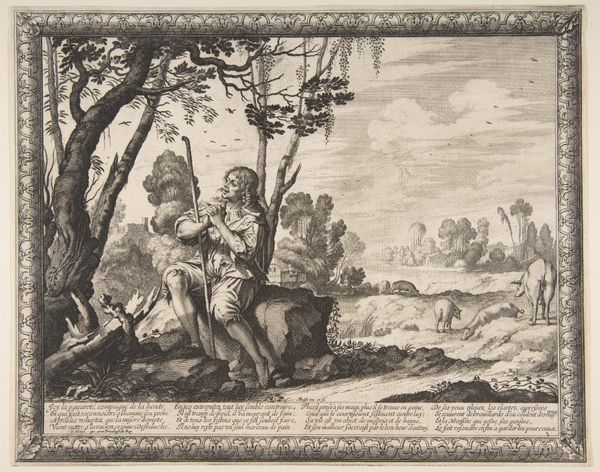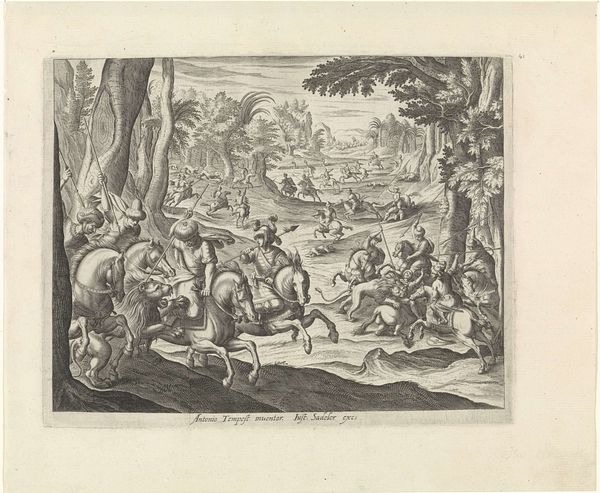
engraving
#
allegory
#
baroque
#
landscape
#
figuration
#
form
#
line
#
genre-painting
#
history-painting
#
nude
#
engraving
Dimensions: height 351 mm, width 461 mm
Copyright: Rijks Museum: Open Domain
Curator: This engraving is attributed to Giovanni Francesco Venturini, titled "Boogschietwedstrijd van Diana en haar nimfen," placing its creation sometime between 1660 and 1710. It presents quite a dynamic scene. Editor: Dynamic is one word for it. I immediately notice the interplay of light and shadow, creating a swirling effect almost reminiscent of a storm, although the figures suggest something celebratory is afoot. Curator: Indeed. Look closer, and you will observe how Diana, goddess of the hunt, stands centrally, poised, an embodiment of female power and virtue. The surrounding nymphs participating in the archery contest reflect the collective strength of women bound by devotion and skill. Editor: I'm drawn to the spatial composition—the landscape receding in layers, creating a sense of depth despite the monochromatic palette. The strong horizontal and diagonal lines of the landscape, punctuated by the verticality of the trees and figures, generates visual rhythm. What readings can be obtained from these elements, and where is this energy channeled? Curator: The formal arrangement amplifies the thematic intent, with its allusions to chastity and female independence in nature. The arrows could symbolize focus and intention, and perhaps a rejection of earthly bonds, of marriage to be precise. The woodland is Diana’s domain of unfettered freedom. Editor: So it seems that Venturini has rendered here, quite literally, a structured rejection of structure, which appears symbolically crucial in interpreting the themes displayed within the work itself. The controlled disorder of line serves that point, certainly. Curator: Exactly! Consider that this emblem promotes not just physical skills but moral virtues valued in aristocratic circles. It links back to a tradition celebrating the strengths of women through allegorical portrayals of goddesses and heroines, very fitting in baroque context. Editor: Well, I appreciate how you've illuminated the socio-cultural resonances encoded within the pictorial syntax and also its place in artistic production of the baroque. Curator: And your observation of the pictorial organisation added new perspectives about reading the imagery through its shapes.
Comments
No comments
Be the first to comment and join the conversation on the ultimate creative platform.
